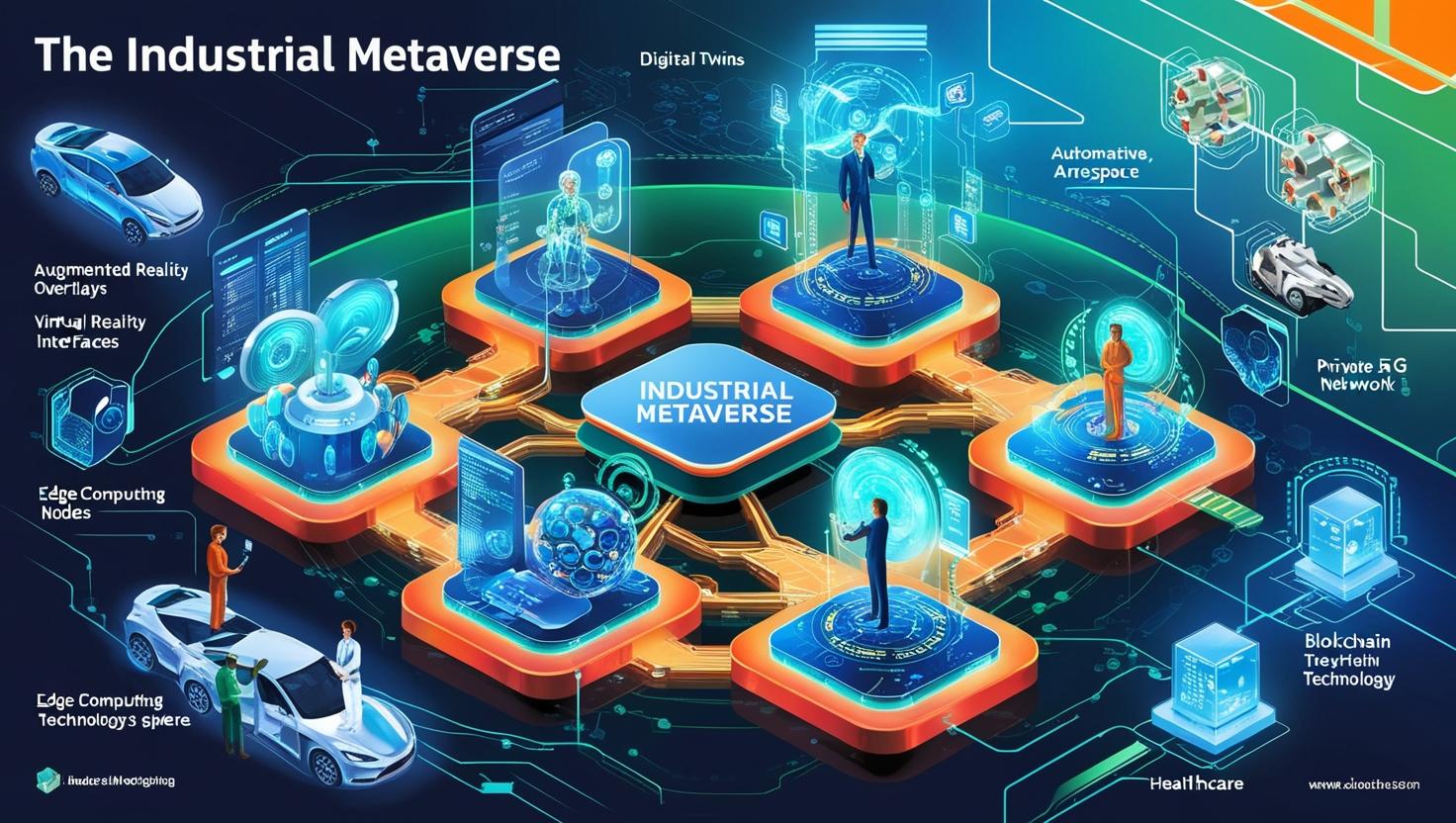The concept of the industrial metaverse is rapidly evolving from a futuristic idea into a transformative force in global manufacturing and industrial operations. By blending the physical and digital worlds, the industrial metaverse offers a powerful platform for simulation, collaboration, and optimization—unlocking new levels of efficiency, safety, and innovation.
As industries strive to embrace digital transformation and remain competitive in a fast-changing technological landscape, the industrial metaverse stands out as a game-changing enabler. It represents a convergence of digital twin technology, IoT, artificial intelligence, augmented/virtual reality (AR/VR), and real-time 3D environments, all working together to revolutionize how manufacturing processes are designed, monitored, and improved.
What Is the Industrial Metaverse?
The industrial metaverse refers to immersive, interactive virtual environments that replicate real-world industrial operations. Unlike the consumer-focused metaverse, which centers on gaming or social interaction, the industrial metaverse is purpose-built for manufacturing, energy, logistics, construction, and other mission-critical sectors.
These environments are powered by digital twins—virtual replicas of physical assets, processes, or systems. When integrated with live data from sensors, machines, and production lines, these twins allow for real-time monitoring, testing, and analysis. Combined with immersive XR interfaces, users can interact with these virtual spaces in ways never before possible.
Redefining Manufacturing through Simulation and Digital Twins
At the core of the industrial metaverse is the ability to simulate production environments in real-time. Manufacturers can design new factory layouts, test workflows, and optimize logistics before physical implementation. This approach significantly reduces design errors, improves agility, and saves time and costs associated with trial-and-error in physical spaces.
Download PDF Brochure @ https://www.marketsandmarkets.com/pdfdownloadNew.asp?id=156427935

Digital twins enable predictive maintenance by continuously monitoring the condition of machinery. Engineers can simulate wear and tear, assess potential points of failure, and proactively schedule repairs—all within a digital environment. This drastically reduces unplanned downtime and extends asset life cycles.
Enhancing Workforce Training and Collaboration
One of the most practical applications of the industrial metaverse lies in workforce development. Using immersive technologies like AR and VR, companies can create realistic, interactive training modules for operators, technicians, and engineers. These virtual training environments are safer, more scalable, and more cost-effective than traditional hands-on methods.
In addition, the metaverse enables remote collaboration on an entirely new level. Teams from different geographic locations can enter a shared virtual space to discuss production changes, inspect equipment, or simulate operational scenarios. This fosters faster decision-making, reduces travel costs, and brings unprecedented flexibility to industrial collaboration.
Optimizing Operational Efficiency and Sustainability
By creating a complete, data-rich mirror of the physical plant, companies can identify inefficiencies, energy losses, and safety risks in real time. This level of visibility supports lean manufacturing principles and allows for continuous improvement based on data-driven insights.
Moreover, the industrial metaverse supports sustainability goals. Simulating and optimizing energy consumption, material use, and supply chain dynamics within a virtual model leads to more efficient resource utilization. As industries worldwide aim to reduce their carbon footprints, the metaverse becomes a valuable ally in reaching ESG targets.
Real-World Examples of Industrial Metaverse Adoption
Leading manufacturers and industrial players are already exploring or implementing metaverse strategies. Automotive giants use digital twins to optimize production lines and test autonomous vehicle systems in simulated environments. Aerospace companies utilize immersive tools for aircraft assembly and maintenance training. Energy firms model complex facilities, such as refineries or offshore rigs, to manage safety and performance from virtual control centers.
Industrial metaverse platforms developed by companies like Siemens, NVIDIA, PTC, and Microsoft are helping accelerate this transition, offering integrated ecosystems that bridge software, hardware, and data layers into cohesive, real-time simulations.
Challenges and Considerations
While the potential is vast, industrial metaverse adoption also comes with challenges. High implementation costs, data integration complexity, cybersecurity concerns, and the need for specialized skills may slow widespread adoption in the short term. However, as technology matures and ROI becomes more evident, these barriers are expected to diminish.
Companies must also rethink their organizational culture, moving from siloed departments to digitally connected teams. Change management, user training, and cross-functional collaboration are critical to realizing the full value of metaverse-enabled operations.
The Future of Industrial Operations Is Virtual—and Real
As we look ahead, the future of industrial metaverse will play a central role in the next wave of industrial innovation. It will power smart factories, enable hyper-personalized production, and allow real-time orchestration of complex global supply chains.
With its ability to merge immersive interfaces with real-world data and AI insights, the industrial metaverse is not just a buzzword—it’s a transformative infrastructure for the Factory of the Future. Companies that invest now will gain a significant competitive edge in operational efficiency, innovation speed, and workforce agility.
FAQ:
1. What is the industrial metaverse?
The industrial metaverse is a virtual environment that replicates real-world industrial operations using technologies like digital twins, IoT, AI, and extended reality (AR/VR). It enables immersive interaction, real-time simulation, and data-driven decision-making in manufacturing and other industrial sectors.
2. How is the industrial metaverse different from the consumer metaverse?
While the consumer metaverse focuses on social interaction, gaming, and entertainment, the industrial metaverse is centered on business value. It supports industrial applications such as factory simulation, virtual training, remote equipment monitoring, predictive maintenance, and operational optimization.
3. What technologies enable the industrial metaverse?
Core technologies include digital twins, IoT sensors, edge computing, 5G connectivity, artificial intelligence, machine learning, AR/VR/XR interfaces, and high-performance simulation engines. These work together to create a live, interactive mirror of real-world industrial environments.
4. What are the main benefits of adopting the industrial metaverse?
Benefits include improved operational efficiency, reduced downtime, better workforce training, faster prototyping, enhanced collaboration, and lower production costs. It also supports sustainability by optimizing resource use and reducing waste through virtual simulations.
5. How does the industrial metaverse improve workforce training?
Using VR and AR, companies can create safe, immersive training environments where workers learn to operate machinery or respond to emergency situations without real-world risk. These experiences are more engaging and effective than traditional training methods.
